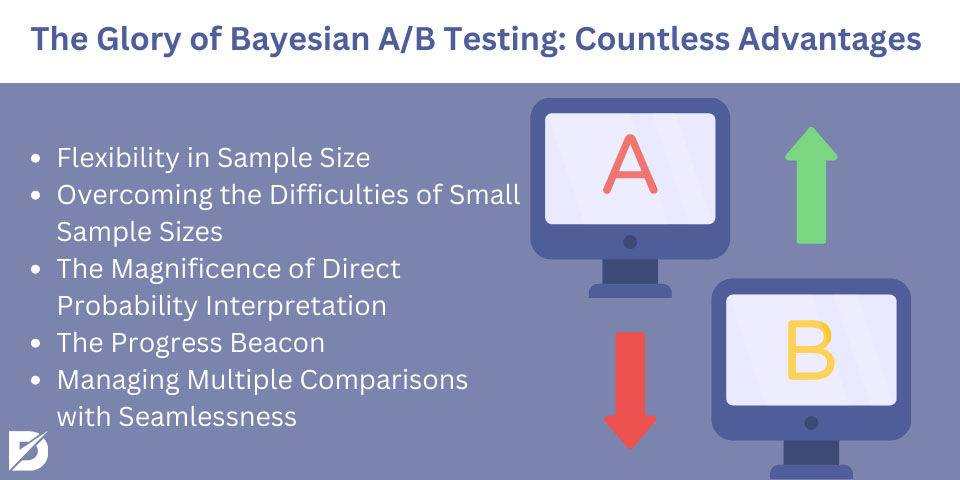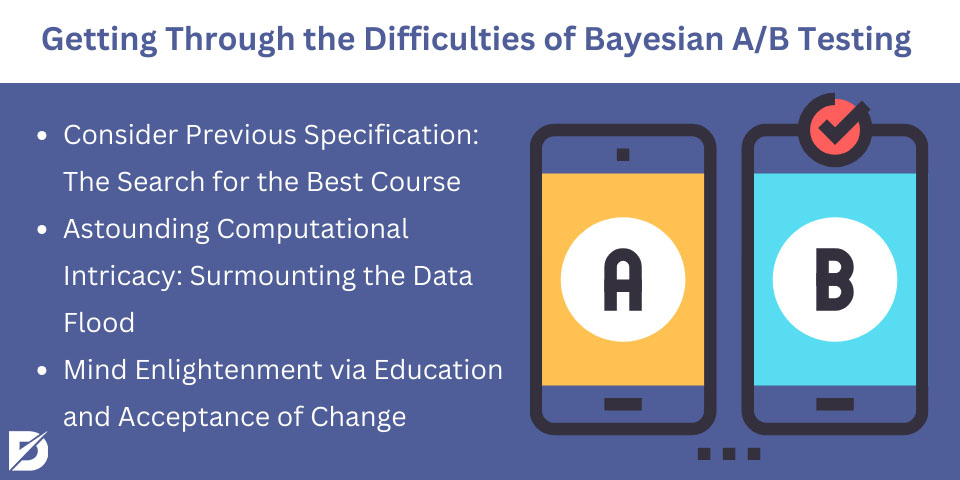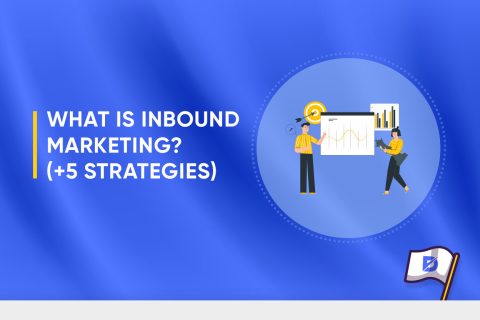In the age of data-driven decision-making, businesses are constantly looking for innovative and effective methods to improve user experiences, optimize their strategy, and boost performance indicators. Among the various tools and methodologies available, Bayesian A/B testing, also known as Bayesian hypothesis testing or the Bayes test stands out as a transformative method. This in-depth essay will investigate the fascinating area of Bayesian A/B testing, emphasizing its complexities, methodologies, and the compelling reasons that justify its growing appeal in statistical research.
A Comprehensive Guide to Bayesian A/B Testing
Bayesian A/B testing is a complex statistical approach to assess the performance of two or more iterations of a website, application, or marketing campaign. In contrast to standard frequentist A/B testing based on p-values and confidence intervals, the power of Bayesian A/B testing stems from Bayesian probability theory.
Bayesian Probability Theory: A Foundation for Belief
To truly appreciate Bayesian A/B testing, we must first become acquainted with the principles of Bayesian probability theory. Unlike frequentist statistics, which base probabilities on long-term event frequencies, Bayesian probabilities are based on degrees of belief or confidence in the likelihood of events occurring. Bayesian probability, like the belief updating paradigm, begins with a prior belief (prior distribution) and absorbs additional information to arrive at a posterior belief (posterior distribution).
How to Avoid the Bayesian A/B Testing Process
- The initial stage: To assume the conversion rates of the variants under consideration. Expert knowledge shapes this perspective, typically presented as a probability distribution, drawing from various sources, including opinions of professionals, subject expertise, and historical data.
- Data Collection Odyssey: Each variant is then given to a random cohort of individuals, and the responses—clicks, sign-ups, purchases, or other relevant metrics—are meticulously documented. These accumulating data serve as the foundation for data-driven choices.
- The Bayesian Updating Adventure: Using Bayes’ theorem, the initial prior belief is altered when fresh data is received, resulting in a posterior distribution. This posterior distribution is consistent with the newly obtained data’s increased comprehension of each variation’s conversion rates.
- Practitioners set out on an excursion: Armed with posterior distributions, to compare the variances side by side in a comparison study. Bayesian A/B testing, unlike frequent testing, does not use fixed significance criteria. Instead, it provides a more rational decision-making technique by calculating the possibility that one variant would outperform another.
- Decision-Making Odyssey: Data-driven decisions are made on which variant is superior to others after computing posterior probabilities. Because this technique considers uncertainty, it enables more responsible and rational decision-making.
The Glory of Bayesian A/B Testing: Countless Advantages
After navigating the environment of Bayesian A/B testing, let us now analyze the several advantages it has over traditional A/B testing methodologies.

Flexibility in Sample Size: The First Ray of Light
One of the primary characteristics of Bayesian A/B testing is its unrivaled sample size flexibility. For standard frequentist A/B testing, a preset sample size is often necessary, which might be troublesome in dynamic situations with changing traffic or restricted resources. In comparison, it is extremely adaptable and can continually update findings as new data becomes available, making it appropriate for the ever-changing nature of real-world situations.
Overcoming the Difficulties of Small Sample Sizes: Charting a Course of Action
When working with small sample sizes, frequentist A/B testing confronts significant obstacles, leading to misleading or inconclusive findings. Because of its robustness, Bayesian A/B testing becomes the obvious option under these situations. It successfully manages poor data availability circumstances by combining past concepts.
The Magnificence of Direct Probability Interpretation: Making Informed Decisions
Non-statisticians can easily understand the findings of Bayesian A/B testing, as they provide accessible probabilities. Aside from the intricacies of confidence intervals and p-values, Bayesian testing gives straightforward assertions such as “Variation A has a 90% chance of outperforming Variation B.” This simplifies decision-making processes, boosting decision-makers and stakeholders’ transparency and comprehension.
The Progress Beacon: The Radiance of Continuous Learning
Bayesian A/B testing fosters an attitude of continuous improvement and advancement. Businesses encourage adaptability and agility through their intrinsic capacity to enable the ongoing updating of beliefs and choices with the introduction of new facts. This recurrent method increases the possibilities of fine-tuning approaches in response to fresh discoveries.
Managing Multiple Comparisons with Seamlessness: A Unified Point of View
In real-world scenarios requiring comparison, businesses sometimes confront not one, not two, but multiple variants. Bayesian A/B testing broadens its scope to address such complex situations, giving a consistent structure for comparing and selecting various options.
Getting Through the Difficulties of Bayesian A/B Testing
Even while Bayesian A/B testing is wonderful, it has challenges and limits. Understanding these factors is critical to realizing the methodology’s full potential.

Consider Previous Specification: The Search for the Best Course
The selection of a prior belief is critical when doing Bayesian A/B testing. A previous that is not properly specified may mislead the results. Finding an appropriate antecedent typically requires subjective judgments, making it a tough task, particularly for individuals with little domain knowledge.
Astounding Computational Intricacy: Surmounting the Data Flood
Bayesian calculations may have high computational needs when working with huge datasets or intricate models. This might be a hurdle for organizations with limited computational resources, slowing down the experimentation process.
Mind Enlightenment via Education and Acceptance of Change
A shift in viewpoint, as well as some statistical expertise, are necessary for Bayesian A/B testing. Gaining a complete knowledge of the Bayesian method can take time, necessitating concerted efforts to disseminate information and gain acceptance inside organizations.
A Useful Example of Bayesian A/B Testing Anchoring
To bring the concept of Bayesian A/B testing to life, choose a real-world situation demonstrating its application and success.
Improving the Online Shopping Experience
Assume you own an online business and want to know which of two alternative designs of product pages (referred to as Variation A and Variation B) is more effective at generating sales. In this example, let’s delve into the realm of Bayesian A/B testing:
Conviction Establishment in the Past
The journey begins with establishing an earlier belief that both versions have equal odds of success.
After that, you present each version to a randomly selected cohort of website visitors, and you carefully document their interactions—clicks, sign-ups, purchases, and any other relevant metrics—afterward. This dynamic dataset serves as the foundation for data-driven choices.
The Bayesian Updating Adventure
Using Bayes’ theorem, your initial prior belief is altered as fresh evidence is collected continuously. Based on the newly gathered data, the result is a posterior distribution that encapsulates your better knowledge of the conversion rates associated with each modification.
With posterior distributions in hand, you embark on an adventure to directly compare variances in a comparative analysis. In contrast to frequent testing, Bayesian A/B testing eliminates fixed significance levels in favor of a more intuitive technique. It assesses the chance that one variant would outperform another, making decision-making easier by providing a clearer picture of relative performance.
The Odyssey of Decision-Making
Experts use posterior probabilities to make data-driven decisions on which variation is superior to another. This method accounts for unpredictability, allowing for more responsible and reasonable judgments that will improve the overall performance of your online store.
Accepting Bayesian A/B Testing as a Method of Making Informed Decisions
Finally, Bayesian A/B testing emerges as an effective statistical paradigm for improving experimental decision-making. Although there are some disadvantages to Bayesian A/B testing, such as the need for acceptance and education, computer complexity, and prior specification, the benefits far outweigh the disadvantages. Organizations are increasingly relying on data-driven decision-making, and Bayesian A/B testing has the potential to dramatically increase the efficacy and efficiency of experimental operations. By understanding its guiding principles and advantages, organizations may employ Bayesian A/B testing to make more informed and meaningful decisions in the ever-changing field of data-driven decision-making.
Frequently Asked Questions About
The Bayesian A/B testing, Bayesian hypothesis testing, or the Bayes test, is a statistical approach that evaluates several versions of a website, app, or campaign. In contrast to traditional A/B testing, it employs Bayesian probability theory and reports findings as probabilities rather than p-values.
A sample size is not required for Bayesian A/B testing, sometimes called a Bayesian AB test. It can be utilized when traffic or resource availability is uncertain since it can respond to changing data.
When there is limited data, a Bayesian test, also known as Bayesian A/B testing, leverages prior assumptions to enhance outcomes, delivering more dependable results than frequentist procedures.
Bayesian A/B testing simplifies probability results, allowing non-statisticians to utilize it and expediting decision-making.
Computational complexity, the need for team education on the Bayesian technique, and prior specification are all barriers to Bayesian A/B testing, which also covers Bayesian hypothesis testing.





No comments to show.